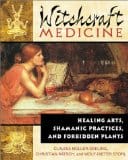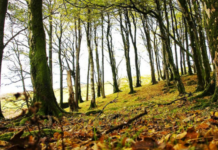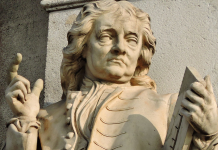
Witchcraft Medicine: Healing Arts, Shamanic Practices, and Forbidden Plants
by, Claudia Muller-Ebeling, Christian Ratsch and Wolf-Dieter Storl
Inner Traditions, 0892819715, 240 pp. (incl. appendix, bibliography and index), 1998, 2003
What image comes to mind when you read the phrase “Witchcraft Medicine”? Do you see a crone bent over a cauldron, muttering under her breath? Do you imagine a dark peasant hovel in the Middle Ages? Me, too! The subtitle of this volume, translated from a German edition of 1998, helps to clear away some of the misconceptions before the cover is even opened however. “Healing Arts, Shamanic Practices, and Forbidden Plants” lets the reader know that the topic will range far beyond narrow preconceptions.
The book is profusely illustrated with old woodcuts, drawings and full-colour photographs. Quotations from numerous sources, ancient , medieval, and modern appear frequently in sidebars. There are charts listing various plants and their associations with planets, deities, and symbolism. It is not an herbal, although it contains a lot of information on plants. Nor is it a book of folk beliefs, although many of them appear within its covers. It is, however, a compendium of information which could be welcomed into the libraries of many individuals and groups interested in the healing arts.
The first five sections of the book were written by Wolf-Dieter Storl, a cultural anthropologist and ethnobotanist. They run the gamut from the view of primitive peoples regarding their relationship to the world to the view of “modern” peoples of what primitives believed, which are often very different things.
Although the author of the first few chapters, Wolf-Dieter Storl, appears to be knowledgeable on the subject of herbalism and healing, he fails to show the e same level of expertise in other areas. On page 22, for example, appears the statement “The black god of the Underworld, whom the Celts knew as Samhain, enters into his reign.” I thought that particular fable has been laid to rest years ago. Samhain was the season, not the deity.
Mr. Storl sees the use of “Witchcraft Medicine” as divorced from any theological context. He sees it as a holistic approach to life. He distances it from using drugs for recreational “trips,” and from its use in amulets and as poisons.
There are large sections (shaded in grey) devoted to major herbs in use for their holistic approach to healing. Within these sections are contained large amounts of folk legend and knowledge concerning the herbs.
There are minor editing glitches in this book some of which may be the result of errors in translation (verb/noun agreement, for instance) and a few which are simple typographical errors (dropped spacings, etc.), but they in no way detract from the value of the work.
While I may not agree with everything contained in the sections dealing with the beliefs and actions of witches by these authors, their herbal information is quite valuable. Their background on the suppression of “natural drugs” in favour of those whose manufacture can be controlled by corporations is also quite insightful.
The next section, written by Christian Ratsch, an anthropologist and ethnopharma-cologist, is devoted specifically to the herbs and plants associated with witches and their goddesses.
The following section was written by Claudia Muller-Ebeling, a historian and anthropologist, and is devoted to the images of witches throughout history. It isn’t necessarily pleasant reading, but it is informative.
The final section is again written by Christian Ratsch and covers those drugs used by witches and shamans over the years (and misused today for the purpose of recreational “tripping”). There are some rather scathing comments about the prohibitions of various drugs, and well as a few comments which could very well open a few eyes.








